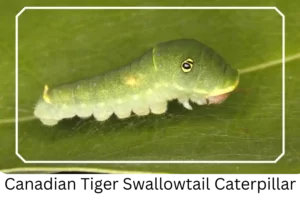Canadian Tiger Swallowtail (Papilio canadensis)
The Canadian Tiger Swallowtail (Papilio canadensis) is a captivating species of butterfly that graces Canada with its presence. As suggested by its name, this light-colored butterfly is predominantly found across Canada, flourishing in its natural habitats. Often mistaken for its close relative, the Eastern Tiger Swallowtail, due to their similar appearance, it stands out upon closer inspection, offering unique characteristics that delight enthusiasts and casual observers alike.
Scientific Classification
- Family: Papilionidae
- Genus: Papilio
- Scientific Name: Papilio canadensis
Overview
Thriving in the diverse ecosystems of North America, the Canadian Tiger Swallowtail butterfly represents a beautiful component of its natural environment. With a lifecycle that takes it from a cleverly disguised caterpillar to a striking adult butterfly, this species exhibits fascinating adaptations for survival and reproduction. Observing these butterflies during their flight period in spring and summer offers a glimpse into the complex interplay between species and their habitats, highlighting the importance of conservation efforts to preserve these delicate yet resilient creatures.
Description and Identification

 Caterpillar
Caterpillar
In its larval stage, the Canadian Tiger Swallowtail caterpillar showcases a vibrant green color, accompanied by an enlarged head. It is adorned with two pairs of yellow dots and a pair of false eyes with a bluish hue, creating a snake-like appearance intended to deter predators. When younger, these caterpillars possess brown and white markings to mimic bird droppings, a clever disguise against potential threats.
Pupa
Transitioning into the pupal stage, the chrysalis adopts a color spectrum ranging from light to dark grayish brown. During this phase, they undergo hibernation, overwintering while suspended from twigs or branches by silk threads, a testament to their resilience and adaptability.
Adult Butterfly
Sexual Dimorphism: This species shows no significant visual differences between males and females, making them indistinguishable based on appearance alone.
Color and Appearance: Upon maturity, the forewings of both sexes display black stripes against a backdrop of yellowish-white to cream, especially notable when the wings are spread. The underside reveals a continuous band of merged yellow spots, complemented by orange scales on the hindwings, contributing to their distinctive look.

 Average Wingspan: Adults boast an impressive wingspan ranging from 67 to 80 mm (2.6 – 3.1 in), allowing for medium to fast flight patterns that captivate onlookers.
Average Wingspan: Adults boast an impressive wingspan ranging from 67 to 80 mm (2.6 – 3.1 in), allowing for medium to fast flight patterns that captivate onlookers.
Flight Pattern: Characterized by medium to fast speeds, their flight is a mesmerizing dance through the air, highlighting their agility and grace.
Eggs
Laid singly on the host plant, their eggs are translucent white to light greenish, marking the beginning of a new generation.
Quick Facts | |
| Distribution | Spanning from central Alaska southeast across Canada to northern New England, including the northern Great Lakes states. |
| Habitat | Prefers deciduous, evergreen-deciduous woods, and forest edges. |
| Lifespan of Adults | Can live up to 2 weeks. |
| Host Plants | Favors Prunus serotina, Betula, Populus, and Malus genera. |
| Adult Diet | Primarily consumes flower nectar. |
How to Identify Canadian Tiger Swallowtail?
Identifying the Canadian Tiger Swallowtail can be a delightful challenge for butterfly enthusiasts. Look for its large wingspan and the striking yellow and black pattern on the wings. The absence of significant sexual dimorphism means both males and females share the same vibrant coloration. Unique to this species, the ventral side of the wings features merged yellow spots forming a continuous band, with orange scales on the hindwings. Observing these characteristics, along with their flight pattern and preferred habitats, can help distinguish them from their close relatives, enriching the experience of nature observation and butterfly watching.
Did You Know?
- A rare black female form of the Canadian Tiger Swallowtail exists, adding an intriguing variation to the species.
- Historically, it was mistakenly classified as a subspecies of Papilio glaucus, highlighting the evolving understanding of butterfly taxonomy.
- Males of this species are known to gather on wet soil to consume moisture, a behavior known as “puddling,” which is essential for their survival and reproduction.
Conclusion
The Canadian Tiger Swallowtail butterfly not only adds beauty to the landscapes of North America but also plays a crucial role in the pollination of various plant species. Its lifecycle, from the ingeniously camouflaged caterpillar to the majestic adult butterfly, showcases the marvels of adaptation and survival. By understanding and appreciating these creatures, we underscore the importance of biodiversity and the need to protect their natural habitats for future generations to enjoy.








